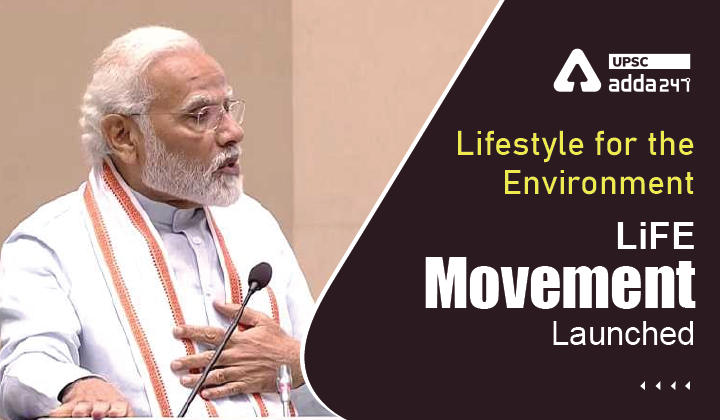Table of Contents
LiFE Movement- Relevance for UPSC Exam
LiFE Movement: Recently launched LiFE Movement initiative is relevant for UPSC aspirants. LiFE Movement will come under environment, and conservation section of the General Studies Paper 3 of the UPSC Syllabus.
LiFE Movement in News
- Recently, Prime Minister Shri Narendra Modi launched a global initiative ‘Lifestyle for the Environment – LiFE Movement’ via video conference.
- The launch of LiFE Movement will initiate ‘LiFE Global Call for Papers’ inviting ideas and suggestions from academics, universities & research institutions etc.
- LiFE Movement will influence and persuade individuals, communities and organisations across the world to adopt an environment-conscious lifestyle.
BASIC countries at Glasgow Summit (CoP 26) of UNFCCC
What is LiFE Movement?
- About: The idea of LiFE promotes an environment-conscious lifestyle that focuses on ‘mindful and deliberate utilisation’ instead of ‘mindless and destructive consumption.
- The LiFE Movement is a global initiative for ensuring sustainable lifestyle of human beings and protecting the planet.
- LiFE Movement global initiative was proposed by the Prime Minister of India at COP26, he UN’s climate summit in Glasgow.
- Vision: The vision of LiFE is to live a lifestyle that is in tune with our planet and does not harm it.
- Those who live such a lifestyle are called “Pro-Planet People”.
- Mission: Mission LiFE borrows from the past, operates in the present and focuses on the future.
- LiFE initiative uses the concept of Reduce, Reuse and Recycle that are woven into our life.
- The Circular Economy has been an integral part of India’s culture and lifestyle and LiFE initiative’s mission is to harness this.
COP26 Glasgow Summit of UNFCC- India’s Commitments
India’s Achievements Towards a Sustainable Future
- India’s forest cover is increasing and so is the population of lions, tigers, leopards, elephants and rhinos.
- India’s commitment to reach 40% of installed electric capacity from non-fossil fuel-based sources has been achieved, 9 years ahead of schedule.
- The target of 10% ethanol blending in petrol has been achieved 5 months ahead of the November 2022 target.
- This is a major accomplishment given that blending was hardly 1.5% in 2013-14 and 5% in 2019-20.
- India’s local initiatives like POSHAN, ASHA, and Swachh Bharat Abhiyan is also helping in financial inclusion and localising the initiative.
India’s Commitments at COP26 Glasgow- Key Commitments made by India
- India’s Target by 2030:
- India will ensure 50% of its energy will be sourced from renewable energy sources.
- India will reduce its carbon emissions by 2030 by a billion tonnes.
- India will also reduce its emissions intensity per unit of GDP by less than 45%.
- India would also install 500 Gigawatt of renewable energy by 2030, a 50 GW increase from its existing targets.
- India’s Target by 2070: India will aim to achieve net-zero emissions latest by 2070.
- This is in contrast to India’s run-up to the COP where it had strongly resisted demands by developed countries to take on net-zero targets.
- Impact on India: Taking on net-zero targets, requires a sharp shift to clean energy sources that several experts have opined, which will impose a steep cost on India.




 TSPSC Group 1 Question Paper 2024, Downl...
TSPSC Group 1 Question Paper 2024, Downl...
 TSPSC Group 1 Answer key 2024 Out, Downl...
TSPSC Group 1 Answer key 2024 Out, Downl...
 UPSC Prelims 2024 Question Paper, Downlo...
UPSC Prelims 2024 Question Paper, Downlo...




